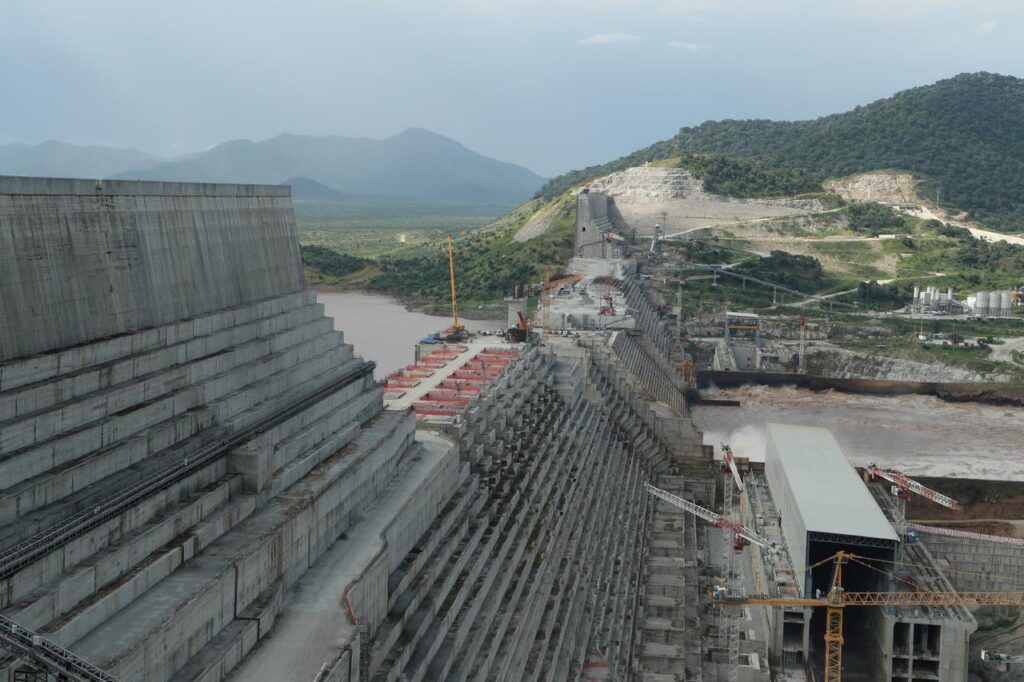Food & Climate
Grand Ethiopian Renaissance Dam (GERD) fifth filling has started today, increasing Egypt’s concern about its water resources and agricultural lands, especially that coincides with a prolonged drought
Egyptian geologist Abbas Sharaqy posted a satellite photo about the fifth filling, on his Facebook account today, Wednesday, July 17, 2024.
Egypt has repeatedly warned that the Renaissance Dam will harm its interests and water security.
Egyptian minister of water resources and irrigation, Hani Sweilem, during Water Week last October in Cairo, renewed his warnings about the dangers of the Ethiopian Renaissance Dam to the country, and stated that despite what is rumored that hydroelectric dams cannot pose harm, in reality such unilateral and non-cooperative practices in Excessive dam operation could have a disastrous effect.
He added that if these practices continue to coincide with a prolonged drought, this may lead to the exit of about 1.1 million people from the labor market, and the loss of about 15% of the agricultural area in Egypt, with the resulting risk of increased social and economic tensions and exacerbation of illegal immigration. Legitimacy. These practices may also lead to doubling Egypt’s food import bill.

The Minister of Irrigation indicated that the Ethiopian Renaissance Dam is one of the unilateral moves that do not adhere to these principles on the shared river basins, whose construction began about 12 years ago on the Nile River, without any consultation, or conducting comprehensive studies on safety, or on the effects.
“Economic, social and environmental impacts on the riparian countries,” and the continuation of the process of building and filling the Renaissance Dam, in addition to commencing operation unilaterally, constitutes a violation of international law, including the Declaration of Principles agreement signed in 2015, and is not consistent with the Security Council statement issued in September. 2021.
GERD has sparked fears among Egyptians since its first filling back in 2020. the Nile contributes 90% of Egypt’s fresh water and is essential to its irrigation system and power generation.
However, Ethiopia argues that filling the dam is essential for its power generation needs and economic development. It believes the dam could more than double its electricity output. While a declaration of principles signed in Khartoum in 2015 between Egypt, Ethiopia, and Sudan concluded that fillings should be done in coordination with all three countries, on-off negotiations again reached a deadlock last December with no binding agreement nor roadmap.
Professor of earth systems at Chapman University, a private university in California, Hesham El-Askary, said Egypt already grapples with the consequences of the previous filling.
“Environmentally, the reduced downstream flow of the Nile has decreased overall water availability, critically impacting domestic consumption, agriculture, and industry,” he said, according to “African business”.
While professor of water resources at Cairo University, Dr. Nader Nour El-Din, said to independent local TV: “I think we should have continued the negotiations longer, so as not to leave the decisions alone to Ethiopia.”
Egypt does not know exactly how much water Addis Ababa intends to store, he added.
He pointed out that Ethiopia needs to store 34 billion cubic meters of water in order to reach its goal of filling the dam by 76 billion, saying that circulating leaks indicate that Addis Ababa will store the remaining amount in two stages.
He stated that Egypt asked Ethiopia to store 11 billion cubic meters of water each time, as well as agreeing to operate all turbines at international rates. Not to affect the share of downstream countries.
He said: “We must agree on operating rates and filling methods for the next two times so that Egypt is not affected. The flood last year was weak, and if the lean years continue, every large amount of water they reserve will affect us.”
Sharaky estimated in June that the middle wall of the GERD would be raised from 625 meters to 640 meters, and that the maximum quantity of the fifth filling would be 23 billion cubic meters upping the total in the reservoir to 64 billion cubic meters from 41 billion cubic meters.

